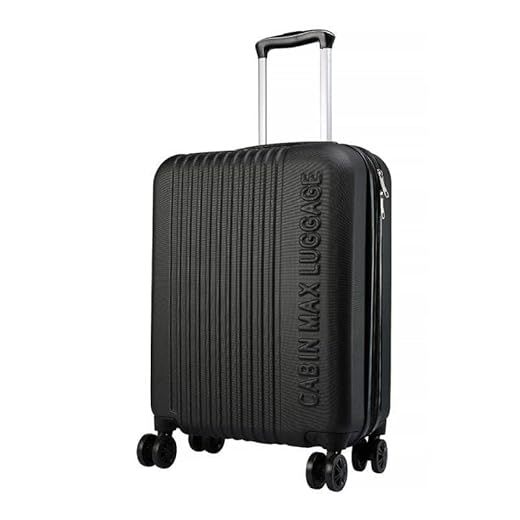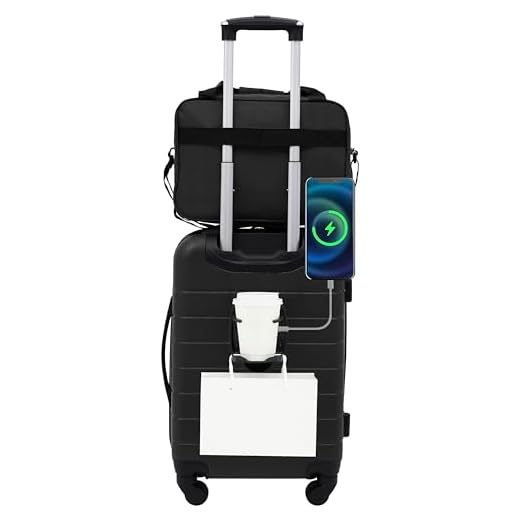





For travelers heading to the UK, it’s essential to recognize the specific regulations concerning cabin bags. Generally, these items are your personal belongings that can be brought aboard the aircraft, and they must fit within the airline’s size restrictions. Check with your carrier for precise dimensions, as they can vary, but most airlines allow a bag measuring approximately 55cm x 40cm x 20cm.
Pack wisely by including necessary essentials such as valid identification, travel documents, medication, and valuables. Items like laptops and cameras should also be easily accessible, as you may need to remove them during security checks. Be aware of liquid restrictions; containers must not exceed 100ml and all should fit within a single clear, resealable plastic bag.
Remember to keep in mind the guidelines for prohibited items as well. Sharp objects, flammable substances, and certain sports equipment are typically not allowed in the cabin. Familiarizing yourself with the latest regulations can minimize wait times at security and ensure a smooth boarding process.
Understanding Carry-On Baggage in the UK
Each passenger is typically permitted to bring one piece of carry-on baggage aboard, which should fit within airline size restrictions–usually around 55 cm x 40 cm x 20 cm. Specific measurements may vary between airlines, so always verify before traveling.
Items allowed in this baggage include personal belongings such as laptops, cameras, medications, and essential clothing. Liquids must be contained in bottles of 100 ml or less, all enclosed within a 1-liter clear plastic bag. Ensure that presentation of these items at security control is quick and efficient.
Additional personal items like a handbag, a coat, or an umbrella may also be included, but they should not exceed weight limits imposed by airlines. Observing these guidelines can help avoid delays during boarding and enhance the overall experience.
In case of specific airline rules, check their official website for comprehensive policies regarding what can be carried onboard. Travellers should be mindful of restricted items, including sharp objects and flammable materials, which are prohibited in any piece of carry-on.
Understanding Carry-On Restrictions in UK Airports
Familiarity with the rules governing cabin bags ensures a smoother travel experience. Passengers should comply with size limits, usually 56cm x 45cm x 25cm, including wheels and handles. Additionally, weight restrictions can vary by airline, commonly ranging from 7kg to 10kg.
Prohibited Items
Sharp objects, liquids exceeding 100ml, and flammable materials are not permitted onboard. Always check the latest guidelines, as regulations may differ by airport and carrier. Essential items, medications, and valuables should be kept within easy reach.
Tracking Options
To avoid losing items, consider using a reliable tracking device. The best luggage tracker for samsung phone allows you to monitor your belongings seamlessly, ensuring peace of mind throughout your travels.
Common Items Allowed in Cabin Bags
Passengers can generally carry a range of items in their carry-on bags. Key allowed items include:
- Electronics: Laptops, tablets, and smartphones are permissible, but may need to be removed during security checks.
- Personal items: Wallets, passports, keys, and travel documents can be kept nearby.
- Medications: Necessary prescriptions can be brought along, provided they are labeled and in original packaging.
- Food and drinks: Small snacks or beverages purchased after security can be transported, while liquids brought from outside must adhere to volume restrictions.
- Clothing: A light jacket or sweater is acceptable, along with a reasonable number of changes of clothes.
- Small travel accessories: Items such as glasses, headphones, and chargers are allowed.
It’s important to check for any specific regulations from the airline prior to departure, as policies may vary.
For security, sharp objects, large liquids, and other prohibited items must remain in checked baggage. Always verify current regulations to ensure compliance.
Prohibited Items in Cabin Bags Explained
Sharp objects, such as knives and scissors, are strictly forbidden. Any item that could be used as a weapon is not allowed to be stored in the compartment above your seat or under it. This also applies to sports equipment like bats and clubs.
Liquid Restrictions
Liquid containers must not exceed 100 milliliters (3.4 ounces). All liquids must fit into a single, transparent, resealable plastic bag with a capacity of no more than 1 liter. This includes beverages, lotions, perfumes, and gels.
Electronics and Batteries
Certain electronic devices, especially those with lithium-ion batteries, may be subject to restrictions. Spare batteries should be carried in your purse or backpack, and larger devices must usually be removed from bags during security checks.
Size and Weight Limits for Cabin Bags
Most airlines enforce specific size and weight restrictions for the bags carried into the cabin. Typically, the maximum dimensions allowed are around 55 cm x 40 cm x 20 cm (22 in x 16 in x 8 in), including handles and wheels.
Weight limits generally range from 7 kg (15 lbs) to 10 kg (22 lbs). However, checking the individual airline’s policy is crucial, as these can differ significantly.
- British Airways: 56 cm x 45 cm x 25 cm; 23 kg (51 lbs)
- EasyJet: 45 cm x 36 cm x 20 cm; no weight limit, but must fit under the seat
- Ryanair: 40 cm x 20 cm x 25 cm; 10 kg (22 lbs) if purchasing priority boarding
Many travelers prefer lightweight options to maximize capacity. Investing in bags specifically designed for air travel is advisable. For a modern solution, consider checking out the best luggage carry on with USB chargers.
Before packing, measure your items to ensure compliance. A well-planned approach helps avoid inconvenience at security checks and boarding gates.
Airline-Specific Carry-On Regulations
Every airline has its own stipulations regarding size and weight allowances for carry-on items. Always verify these requirements before your trip to avoid surprises at the airport. For instance, British Airways allows a single cabin bag with dimensions not exceeding 56 x 45 x 25 cm and a weight must not surpass 23 kg. In contrast, EasyJet permits 45 x 36 x 20 cm for a small bag, emphasizing the need for careful packing.
Ryanair implements even stricter guidelines, permitting one piece of luggage measuring up to 40 x 20 x 25 cm free of charge, while charging for additional or larger bags. Jet2.com provides larger allowances at 56 x 36 x 23 cm with no weight limit stated–though passengers are encouraged to consider cabin safety.
Low-cost carriers may also differ in allowing additional items such as duty-free purchases or personal items like laptops, which may not count towards the overall limit. Familiarize yourself with your chosen airline’s specific policies to optimize your packing strategy. For the best practices regarding container safety while traveling, you can check if are rubbermaid containers freezer safe.
Ultimately, awareness of these airline-specific rules will enhance your travel experience and ensure smooth transit through airport security.
Tips for Packing Your Bag Efficiently
Prioritise items based on their necessity. Place quick-access essentials like travel documents, electronics, and personal items at the top or in external pockets.
Utilise Packing Cubes
These organisers optimise space and make it simpler to locate items. Group similar objects together, such as clothes or toiletries.
Roll Clothes
Rolling instead of folding reduces creases and maximises space. This method also makes it easier to fit items into tight spots.
| Item Type | Packing Method | Space Saved |
|---|---|---|
| Clothes | Rolled | Up to 50% |
| Shoes | Stuffed with socks | Maximise space within |
| Toiletries | Quart-size bags | Compact and organised |
Limit liquids to travel-sized containers. Follow regulations regarding allowable volumes, ensuring they fit within a clear, resealable bag.
Utilise every inch of available space, including the insides of shoes and gaps between broader items. This practice enhances packing efficiency.
Lastly, always review specific airline regulations before departure to ensure compliance and avoid last-minute stress.







